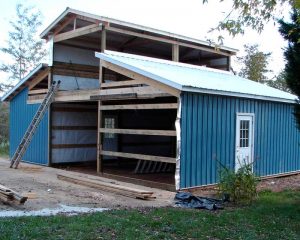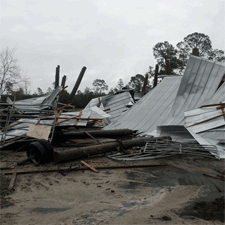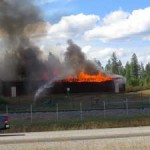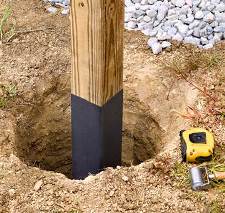You can save some money or save some effort……
Assuming you order a building with steel roofing and/or steel siding, these materials will most usually be delivered to your building site by the steel company. The truck which will be making the delivery is what is known as a “route” truck.
A route truck is one which starts at the steel company’s manufacturing plant, loaded with numerous different steel orders, and makes deliveries along the route. Your particular delivery may be the first to be offloaded, or it may be number 15 to 20 or more down the way. The order for delivery is determined by what creates the least amount of mileage for the driver.
These trucks are usually a semi tractor-trailer combination. They can be up to 80’ in length and can weigh 80,000 pounds when fully loaded. These trucks generally do not have a tight turning radius and are not designed for off-road use. Just because an RV, fifth-wheel, logging truck or a manufactured home has successfully navigated a road or driveway does not mean the steel delivery truck can. Drivers will not endanger themselves, or their equipment in making a delivery.
In many areas of the country, these trucks are equipped so they can (for a nominal charge – paid for at time of your building order) unload the steel for you. Known as steel offloading service, this equipment will usually be either a “knuckle boom” crane or a “spyder” forklift, which attaches to the rear of the trailer. Clear access must be provided for operation of either piece of machinery.
Own your own piece of equipment? If you have a forklift or other piece of machinery capable of picking up at least 2500#, this may be a money saving option for you. Do not wrap chains around the steel skid to lift, as this will damage the edges of the panels. If the steel sheeting is over 20 feet in length, plan on having two pieces of equipment, or a spreader bar, in order to safely lift.
Lastly, trust your instincts. If the steel driver says “oh they always do that” when long lengths of steel are being unloaded with the crane in the center of the skid and the ends look like they are bending down “just a little too far”, stop him! He is the driver, not the person who packed the steel on the skids. He may not know layers of heavy shorter pieces somehow got loaded mistakenly on one or both ends of the longer lengths, and was ill advised to use a spreader bar. Damaged steel, although not your problem to replace if you were not the person unloading it, may put you or your builder behind by 2 or more weeks. Most of the drivers are very good at unloading steel; they do it all day long. But if the steel looks like it is weighted to “crinkle”, chances are…you unfortunately may be right. Ask your building designer about the cost of steel offloading service. It’s well worth its price.









